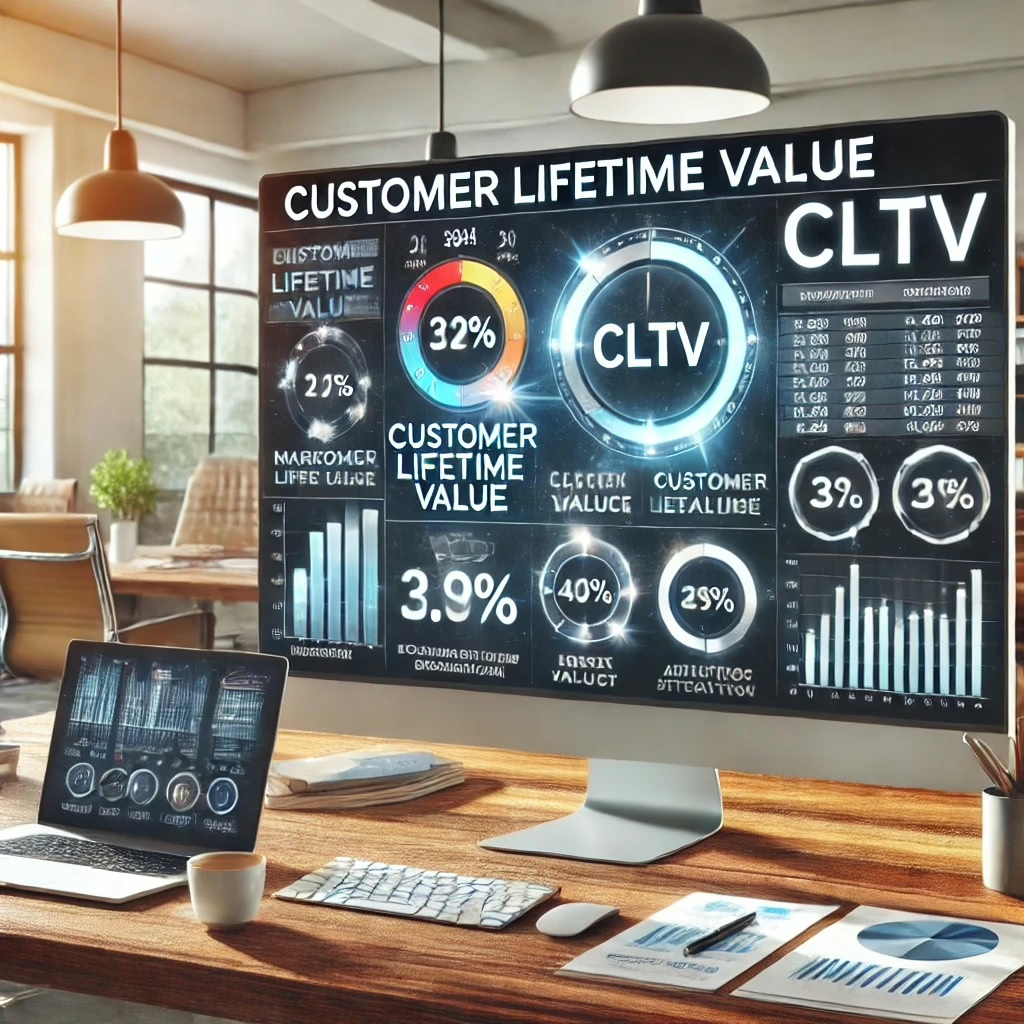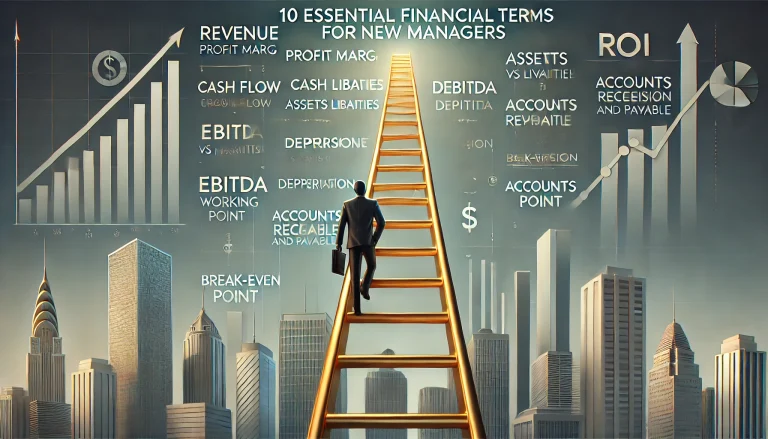The Untapped Goldmine – Why “Customer Lifetime Value (CLTV)” Is Your Business’s Secret Weapon
Disclosure: If you click on my affiliate/advertiser’s links, I am going to receive a tiny commission. AND… Most of the time, you will receive an offer of some kind. It’ s a Win/Win!
Have you ever wondered why some businesses seem to thrive effortlessly while others struggle to stay afloat? It’s not just about having a great product or running flashy ads—it’s about knowing who your most valuable customers are and how much they’re truly worth to your business over time. That’s where Customer Lifetime Value (CLTV) comes in. It’s the difference between simply making sales and building a long-term, profitable business.
I learned this the hard way in my early days, thinking that customer acquisition was the holy grail—until I realised that keeping customers and increasing their value was where the real money was.
Think of CLTV as a business crystal ball—a way to predict how much revenue you can expect from each customer over their entire relationship with your company. It’s not just a number; it’s a strategy-shaping metric that helps you decide where to invest, how to price your products, and even how much you can afford to spend on marketing. Without it, you’re essentially flying blind, hoping that today’s sale will turn into repeat business without actually knowing whether it will. As the Swedish saying goes, “Den som lever får se”—“He who lives shall see”—but when it comes to running a business, guessing isn’t a great strategy.
Here’s something that might surprise you: Acquiring a new customer can cost five times more than retaining an existing one!
Yet, most businesses still pour their resources into constantly chasing new customers instead of maximising the value of the ones they already have. That’s why understanding and calculating CLTV is so powerful—it shifts your focus from short-term sales to long-term profitability. And trust me, once you start seeing your customers as long-term assets instead of one-off transactions, your entire business approach will change for the better.
But here’s where it gets even more exciting: CLTV isn’t just about looking at past data—it’s about making smarter, data-driven decisions for the future. By knowing which customers are the most valuable, you can create tailored marketing campaigns, improve retention strategies, and even adjust your pricing models to ensure long-term growth. I’ve seen businesses completely transform their marketing strategies just by understanding which customers are actually worth keeping and which ones drain their resources without delivering much in return.
Of course, knowing your CLTV is one thing—knowing how to increase it is another. You wouldn’t plant a tree and expect it to grow without water, right? In the same way, customers need nurturing—through personalised experiences, loyalty programs, and high-value content—to keep coming back. Many companies only focus on that first purchase, missing out on the potential of creating lifelong brand advocates who not only buy again but also recommend your business to others.
CLTV in Action
Lessons from the Automotive Industry
Think about your car. The initial sale is important, but where do manufacturers often see substantial, recurring profit? After-sales: parts, repairs, maintenance, and accessories.
* High-Margin Revenue: Just like car manufacturers, businesses should recognize that customer relationships extend beyond the first transaction. After-sales, or in a broader sense, customer retention and upselling, generate higher profit margins.
* Long-Term Value: A car’s lifespan generates multiple revenue opportunities. Similarly, focusing on CLTV means nurturing long-term customer relationships for continuous value.
* Customer Loyalty: Excellent after-sales service builds loyalty, leading to repeat purchases and referrals. In your business, a strong customer experience drives CLTV.
Key Takeaway:
Don’t just focus on acquiring new customers. Invest in building relationships and maximizing the lifetime value of your existing ones, just as car manufacturers do.
So, what’s next? Well, we’re about to break it all down—from understanding the “Customer Lifetime Value Definition” to using real-world formulas and tools to calculate it. Whether you’re a startup owner, an e-commerce seller, or a service provider, this is one metric you cannot afford to ignore. By the end of this guide, you’ll know how to calculate customer lifetime value, apply it to your marketing strategies, and most importantly—use it to boost your revenue like never before!
Ready? Let’s go!
Table of Contents (Click to Expand/Collapse)
1. CLTV Defined: Beyond Transactions – Grasping the True Customer Lifetime Value Definition
When I first heard about Customer Lifetime Value (CLTV), I thought it was just another fancy term for tracking sales. But I quickly learned that CLTV isn’t about single transactions—it’s about understanding the long-term financial impact of a customer on your business. If you’ve ever spent money on ads, promotions, or discounts to attract customers, CLTV helps you answer the real question: Was it worth it?
Let’s say you own a coffee shop. A new customer comes in and buys a £4 latte. That’s great—but if that’s the only time they visit, your business hasn’t gained much. However, if that same customer loves your coffee and returns three times a week for two years, suddenly, their lifetime value skyrockets to over £1,200. Now, imagine having hundreds of loyal customers like that! This is why businesses that focus on long-term customer relationships rather than short-term transactions tend to thrive.
CLTV vs Simple Sales Figures: The Critical Difference
Many businesses fall into the trap of measuring success only by monthly revenue or single-sale transactions. But what if you run a subscription box service like HelloFresh? Your first order might be £40, but if your average customer stays subscribed for 18 months, their CLTV is over £700. This is why HelloFresh and similar companies focus on customer retention, offering discounts on future boxes to keep customers engaged.
Compare that to a business, like a fast fashion retailer, which often operates on a single-sale model. Brands like Shein or Boohoo focus on volume sales but struggle with retention. The problem? Their marketing spend often outweighs what they earn per customer. This is why many fashion startups fail—they chase new customers but ignore CLTV.
Why CLTV Matters More Than Customer Acquisition Cost (CAC)
A shocking study by Bain & Company found that increasing customer retention by just 5% can boost profits by 25-95%. Why? Because acquiring a new customer is 5 to 7 times more expensive than keeping an existing one. That’s why Amazon Prime offers perks like free shipping and exclusive deals—they know the longer you stay, the more you’ll spend.
Look at Netflix vs Blockbuster. Netflix focused on subscription-based CLTV, while Blockbuster relied on one-off rentals. Netflix understood that keeping a customer for years was more profitable than constantly chasing new ones. The result? Blockbuster collapsed, and Netflix thrived.
A Lesson from Apple: How High CLTV Beats Competitors
Ever wondered why Apple can charge premium prices for iPhones? It’s because they’ve mastered CLTV. An iPhone buyer doesn’t just buy one device—they often purchase an Apple Watch, AirPods, iCloud storage, and a MacBook over time. The longer someone stays in Apple’s ecosystem, the higher their CLTV.
Now, compare that to Android manufacturers. Many Android brands sell phones at razor-thin margins, with no clear ecosystem to retain customers. While Samsung, for example, sells millions of devices, it loses customers to competitors like Google Pixel and OnePlus because its ecosystem isn’t as tightly integrated.
Final Thought: CLTV Helps You Future-Proof Your Business
Without a clear understanding of customer lifetime value, businesses often waste time and money on acquisition tactics that don’t pay off. Whether you run a small e-commerce store, a local restaurant, or a tech startup, knowing your CLTV allows you to make data-driven decisions that ensure long-term profitability rather than just short-term wins.
💡 Pro Tip: If you’re not tracking CLTV yet, start today! In the next section, I’ll break down the exact formula you need to calculate it for your business. 🚀
2. The Predictive Power: Unveiling the Customer Lifetime Value Formula for Strategic Growth
I’ll admit—when I first heard about the Customer Lifetime Value formula, I assumed it was just another overcomplicated equation designed for corporate giants. But the truth is, understanding CLTV can transform any business, from a small Etsy shop to a global SaaS company. More importantly, it’s not just a static number—it’s a predictive tool that can steer your marketing, pricing, and retention strategies toward long-term success.
The Customer Lifetime Value Formula: Breaking It Down
Let’s get to the heart of it. The most commonly used CLTV formula is:

Let’s break this down into human language:
• Average Purchase Value (APV) → How much does a customer spend per transaction?
• Purchase Frequency (PF) → How often do they buy from you?
• Customer Churn Rate (CCR) → How many customers you lose over time.
• Profit Margin (PM) → How much profit do you actually make after expenses?
By plugging in your real numbers, you can predict exactly how much revenue a single customer will generate over their relationship with your business.
Have a go with our free CLTV calculator further down…
How CLTV Predicts Your Future Revenue
Let’s say you run a boutique gym and want to calculate your CLTV. Here’s a simplified example:
• Your monthly membership is £50.
• Members stay for an average of 24 months.
• Your profit margin is 40%.
So your CLTV would be:
CLTV = (50 x 12) x 2 x 0.40 = £480
This means each new customer is worth £480 to your business over time. If your gym spends £150 on ads to acquire a new member, it’s a solid investment! But if your acquisition cost exceeds £480, you have a problem.
This is why brands like Peloton focus on keeping customers engaged long-term through exclusive content and connected devices. Their CLTV isn’t just about selling a bike—it’s about ongoing subscription revenue, apparel, and accessories.
CLTV as a Game Changer for E-Commerce & SaaS
For e-commerce businesses, CLTV helps answer crucial questions:
• Should you invest more in paid ads?
• Does offering free shipping boost retention?
• Should you introduce a subscription model?
A great example is Amazon Prime. Jeff Bezos once said, “We don’t make money when we sell things, we make money when we help customers make better purchasing decisions.” That’s why Prime is designed to increase purchase frequency—members spend, on average, 4 times more than non-members, making their CLTV significantly higher.
For SaaS businesses, CLTV is even more vital. Take Spotify—they calculate CLTV to determine how much they can afford to spend on free trials. Since their churn rate is relatively low and their subscription renewals are high, they know they can afford to give away one free month because, statistically, most users will stay long enough to be profitable.
How CLTV Prevents You from Burning Money on Ads
A common mistake businesses make is spending too much to acquire customers without considering their long-term value. I once worked with a luxury skincare brand that ran expensive Instagram ads without tracking CLTV. They were spending £50 to acquire customers who only made a £40 one-time purchase—a disaster! But after analysing their CLTV, they found that loyal customers spent an average of £500 a year! Instead of cutting ads, they shifted focus to repeat purchases by offering subscriptions and loyalty discounts.
Compare this to brands that rely only on one-off purchases—like seasonal businesses selling holiday decorations. Their CLTV is low, meaning they must keep acquisition costs down. This is why many holiday businesses use influencer marketing instead of paid ads—it’s cheaper and attracts more engaged customers.
Quick Guide: What is ROI & How It Relates to CLTV?
💡 ROI (Return on Investment) = The financial return you get for every pound/dollar spent on marketing, advertising, or customer acquisition.
Why ROI Matters for CLTV
CLTV helps you predict how much revenue a customer will generate over time, but ROI tells you whether acquiring that customer was actually profitable.
🔢 Formula:
Example in Action
Imagine you run an online subscription box service:
• Your CLTV = £500 per customer
• Your Customer Acquisition Cost (CAC) = £100 per customer
Your ROI would be:
✅ A positive ROI (above 100%) means you’re making a good return.
🚨 A negative or low ROI means you’re spending too much to acquire customers compared to their value.
How to Use CLTV & ROI Together
• If CLTV is high but ROI is low, you may need to cut acquisition costs (e.g., optimise ads or use referrals).
• If CLTV is low, focus on increasing repeat purchases & customer retention.
📈 The best businesses don’t just chase CLTV—they ensure their ROI is strong, making every pound spent truly profitable!
Use this calculator to work out your ROI:
CLTV & ROI Calculator
Predicting Your Business Growth with CLTV
The beauty of CLTV is that it isn’t just a past metric—it predicts the future. It helps businesses answer:
• How much can we spend on customer acquisition?
• Should we invest in loyalty programs or ads?
• How can we increase customer retention to boost CLTV?
Businesses that use CLTV forecasting can scale much smarter. For example, Netflix, knowing their CLTV, invested billions in exclusive content. They understood that keeping existing customers engaged was far more profitable than constantly acquiring new ones.
Final Thought: CLTV is Your Business GPS
Think of CLTV as your financial GPS—it tells you where to invest, what to fix, and how to grow sustainably. Without it, businesses run blind, chasing short-term wins while ignoring long-term stability.
🚀 Coming Up Next: We’ll walk through a step-by-step guide on how to calculate your own CLTV. Grab your numbers—we’re diving in!
3. From Raw Data to Revenue Insights: “Calculating Customer Lifetime Value” – The Step-by-Step Breakdown
If you’ve ever wondered how to actually calculate Customer Lifetime Value (CLTV), you’re in the right place. The formula might seem intimidating at first, but trust me—it’s simpler than you think!
I’ll walk you through a step-by-step breakdown, so by the end of this section, you’ll know exactly how to determine CLTV for your business. And if maths isn’t your thing, don’t worry! I’ve also created a downloadable Excel template that does the calculations for you.
Step 1: Understand the Core CLTV Formula
The most common way to calculate CLTV is:
Let’s break it down:
1️⃣ Average Purchase Value (APV) → How much does a customer spend per order, on average?
2️⃣ Purchase Frequency (PF) → How often does a customer buy from you in a given period?
3️⃣ Customer Lifespan (CL) → How many years (or months) does a customer typically stay with your business?
Example Calculation
Let’s say you own a subscription-based coffee company:
• APV = £20 (your average customer spends £20 per order)
• PF = 12 (they buy once a month for a year, so 12 times a year)
• CL = 5 years (on average, a customer stays subscribed for 5 years)
Your CLTV would be:
20 x 12 x 5 = 1,200
This means that, on average, each customer is worth £1,200 to your business over their lifetime.
To make it easier for you I have created this CLTV calculator
Basic CLTV Calculator
Step 2: Adjust for Gross Margin (Optional but Useful!)
To make the calculation more realistic, we should factor in profit margins (because revenue ≠ profit!).
CLTV (adjusted) = CLTV x Gross Margin
If your gross margin is 40%, then:
1,200 x 0.4 = 480
This means that the actual profit from each customer over their lifetime is £480.
Step 3: Use Our Calculators to Automate Your CLTV Calculations
I know formulas can be a pain, so I’ve created free online CLTV calculators that automates this for you. Simply enter your business data, and it will calculate your CLTV instantly.
CLTV Calculator
✅ How to Use It:
1. Enter your APV, PF, and CL in the fields as indicated.
3. If you want, enter your gross margin to see profit-based CLTV.
4. The program will automatically calculate your CLTV!
If you know your Customer Acquisition Cost, use this CLTV calculator:
CLTV & ROI Calculator
Step 4: Advanced CLTV Considerations
While the basic formula works for most businesses, some industries (like SaaS and eCommerce) use more advanced methods like:
🔷 Predictive CLTV – Uses AI/machine learning to estimate future CLTV based on customer behaviour.
🔷 Cohort-Based CLTV – Groups customers based on when they joined to see how their value changes over time.
🔷 Discounted CLTV – Adjusts future revenue for inflation and risk (useful for finance-heavy businesses).
For small businesses, the simple formula works just fine. But as you grow, you might want to explore these deeper methods.
Final Thoughts: Why CLTV Matters for Your Business
📊 Imagine knowing exactly how much a customer is worth before spending a penny on ads!
That’s what CLTV does. It helps you:
✔️ Make better marketing decisions (spend more on high-value customers, less on low-value ones)
✔️ Improve customer retention (if CLTV is too low, focus on keeping customers longer)
✔️ Increase profitability (adjust pricing, margins, and acquisition strategies)
I highly recommend calculating your CLTV today—even if it’s just using the basic formula. It’s a game-changer.
This more comprehensive CLTV, CAC, and ROI calculator will make it easier for you to assess your marketing effectiveness.
CLTV, CAC, & ROI Calculator

4. Tools of the Trade: Streamlining Customer Lifetime Value Calculation with Calculators and Spreadsheets
We’ve covered the importance of Customer Lifetime Value (CLTV) and how to calculate it manually, but let’s be honest—not everyone wants to crunch numbers in a spreadsheet all day! Fortunately, several tools and software solutions can simplify CLTV calculations, automate data tracking, and provide deeper insights into customer profitability.
Beyond making your life easier, these platforms ensure accuracy and efficiency, helping businesses refine their marketing strategies and maximize long-term value.
1. Customer Lifetime Value Calculators (Quick and Easy)
If you need a fast, no-frills way to estimate CLTV, several online calculators can do the heavy lifting. These tools provide instant calculations based on key metrics like average purchase value, purchase frequency, and retention rate.
• HubSpot CLTV Calculator (HubSpot): A simple, free online calculator that quickly estimates customer lifetime value for businesses of any size.
• Kissmetrics CLTV Calculator (Kissmetrics): Designed for digital marketers and eCommerce businesses, Kissmetrics not only calculates CLTV but also offers insights on retention and churn reduction.
• Shopify CLTV Calculator (Shopify): A free tool ideal for eCommerce businesses to determine how much they should invest in acquiring new customers.
Each of these platforms also offers affiliate opportunities through their partner programs, making them great tools to promote while providing value to your audience.
2. CLTV Tracking & Predictive Analytics Software
For those who want more than just a one-time calculation, CLTV tracking software integrates with customer databases and provides real-time updates on customer value trends. These solutions help businesses predict future revenue, improve customer retention, and optimize marketing spend.
• Optimove (Optimove) – Uses predictive analytics and AI to segment customers and enhance retention strategies. It’s a powerful tool for SaaS, eCommerce, and subscription-based businesses.
• Baremetrics (Baremetrics) – Ideal for SaaS companies, Baremetrics tracks CLTV, churn rate, and revenue trends while offering an affiliate program.
• Woopra (Woopra) – Provides real-time customer journey analytics, allowing businesses to predict CLTV based on user behaviour and interactions.
3. Using Spreadsheets & Excel for CLTV Calculations
For those who prefer a more hands-on, customizable approach, Excel remains a versatile tool for CLTV calculations. You can build formulas that dynamically adjust based on real-time sales data, helping businesses refine projections over time.
If you want to take your Excel skills further, consider tools like:
• Microsoft Excel with XLSTAT Add-on – Offers built-in statistical models for CLTV tracking.
• Google Sheets with Supermetrics Integration – Connects directly to analytics platforms for real-time CLTV tracking.

4. CLTV & Marketing Automation Tools
Once you’ve calculated CLTV, the next step is putting that data to work! CLTV insights can optimize marketing automation, ensuring businesses target their most valuable customers while reducing wasted ad spend.
• ActiveCampaign (ActiveCampaign) – Uses CLTV data to personalize email sequences and improve customer engagement.
• Klaviyo (Klaviyo) – A go-to email marketing platform for eCommerce that helps businesses segment high-value customers for targeted campaigns.
• SegMetrics (SegMetrics) – An advanced analytics tool that tracks CLTV across multiple marketing channels and predicts customer behaviour.
Final Thoughts
Calculating Customer Lifetime Value (CLTV) isn’t just about knowing how much a customer is worth—it’s about making data-driven decisions that lead to higher profits. With the right tools, businesses can:
✔️ Track CLTV over time
✔️ Identify high-value customers
✔️ Improve marketing efficiency
✔️ Predict future revenue
Whether you prefer a simple calculator, an Excel-based approach, or AI-powered analytics, the key is choosing a method that integrates seamlessly with your business needs.
🔗 Boost Engagement & CLTV with Interactive Content!
Looking to improve customer retention, personalization, and conversions? Create interactive CLTV calculators, surveys, and lead quizzes with Involve.me—no coding required!
🚀 Try Involve.me for Free(Easily integrate interactive tools into your marketing strategy.)
5. “CLTV” in Action: How “Customer Lifetime Value in Marketing” Transforms Your Campaigns
Most businesses focus on short-term wins—how to get more sales today, how to bring in more leads this week. But truly successful brands think long-term. They understand that retaining and maximizing the value of existing customers is just as important—if not more—than acquiring new ones.
This is where Customer Lifetime Value (CLTV) in marketing becomes a game-changer. When used correctly, CLTV can fine-tune your marketing strategies, allowing you to allocate resources more efficiently, personalize campaigns, and focus on high-value customers who bring in the most revenue over time.
Let’s explore how companies use CLTV-driven marketing strategies to grow their businesses—along with some cautionary tales of those who ignored it.
1. Customer Segmentation: Identifying High-Value Customers
One of the most powerful ways to use CLTV in marketing is segmenting customers based on their lifetime value. Instead of treating all customers the same, businesses can allocate more marketing budget toward high-value customers while using cost-effective retention strategies for lower-value ones.
📌 Real-World Example: Starbucks
Starbucks is a master at using CLTV for segmentation. Their loyalty program and personalized offers ensure that customers with higher lifetime value receive exclusive rewards, early access to promotions, and targeted offers designed to keep them coming back. By leveraging CLTV insights, they can identify which customers are worth investing in—ensuring that their marketing spend is used effectively.
🚨 What happens when brands ignore CLTV?
On the flip side, many eCommerce stores waste money on one-time buyers. Without understanding CLTV, they pour marketing dollars into attracting low-value customers who never return. The result? High ad spend, poor ROI, and stagnating growth.
✅ How to Apply This to Your Business:
• Use CLTV analysis to segment customers into high-value, mid-value, and low-value groups.
• Increase marketing spend on high-value customers with exclusive offers, VIP perks, and loyalty programs.
• Reduce ad spend on low-value customers, or use cost-effective retargeting to increase their lifetime value.
Unlock CLTV by Mastering Customer Personas
Did you know that well-defined customer personas are the foundation of accurate CLTV calculations? By truly understanding your ideal customers—what they want, their pain points, and their buying behaviour—you can predict their lifetime value with much greater precision.
Want to refine your customer personas and make smarter business decisions?
Read: How to Create a Customer Persona ➝2. Personalized Marketing: Targeting the Right Message to the Right Customers
CLTV helps businesses tailor their messaging to different customer segments, ensuring that marketing campaigns resonate with the right people at the right time.
📌 Real-World Example: Amazon
Amazon’s recommendation engine is one of the most sophisticated CLTV-driven marketing tools in the world. Based on past purchase behaviour, they predict what customers will buy next, offering tailored discounts, product bundles, and personalized emails. By optimizing recommendations for repeat buyers, Amazon increases customer retention and drastically boosts CLTV.
🚨 What happens when brands ignore CLTV?
Generic marketing doesn’t work anymore. Sending one-size-fits-all email blasts leads to low engagement and high unsubscribe rates. Without CLTV, companies risk wasting time and money on broad campaigns that don’t connect with their audience.
✅ How to Apply This to Your Business:
• Use email segmentation based on past purchases, engagement levels, and CLTV insights.
• Personalize offers for repeat customers based on their buying behaviour.
• Implement AI-powered recommendations (Shopify, Klaviyo, and ActiveCampaign offer great tools for this).
3. Optimizing Paid Advertising for Maximum ROI
CLTV guides smarter ad spending, helping businesses decide:
✔️ How much to spend to acquire a new customer
✔️ Which customer segments to target with paid ads
✔️ What level of discounting is sustainable for long-term profitability
📌 Real-World Example: Facebook & Google Ads Retargeting
Many businesses use CLTV insights to optimize paid ad campaigns. Let’s take an online fashion retailer that uses Facebook Ads. By tracking CLTV metrics, they identify which customers return for repeat purchases and which drop off after one order.
Instead of wasting money on low-CLTV customers, they shift ad spend toward:
✔️ High-value customers who are likely to buy again
✔️ Lookalike audiences who share similar traits with loyal customers
✔️ Upselling campaigns that increase the order value of existing customers
🚨 What happens when brands ignore CLTV?
A common mistake is overspending on acquisition without considering CLTV. Many startups fail because they burn through cash on paid ads, acquiring low-value customers who never return. This leads to unsustainable ad costs and poor profitability.
✅ How to Apply This to Your Business:
• Set a target customer acquisition cost (CAC) based on CLTV—so you never overspend.
• Use retargeting ads for high-value customers.
• Exclude low-value customers from expensive ad campaigns.
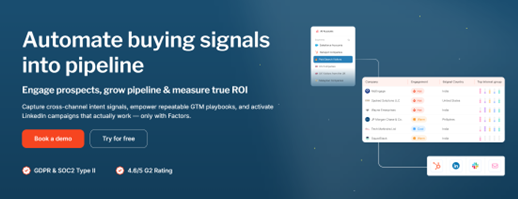
4. Subscription & Retention Strategies for Long-Term Profitability
Customer retention is one of the biggest CLTV boosters. Instead of focusing only on acquiring new customers, smart businesses prioritize keeping existing ones happy.
📌 Real-World Example: Netflix & SaaS Companies
Netflix and other subscription-based companies live and breathe CLTV. Their entire marketing strategy revolves around reducing churn (customer cancellations) and increasing subscription lifetime. They achieve this by:
✔️ Offering free trials to get people hooked
✔️ Using AI-powered recommendations to keep users engaged
✔️ Sending re-engagement emails when customers consider cancelling
🚨 What happens when brands ignore CLTV?
SaaS and subscription businesses fail when they focus only on acquiring new users without optimizing for retention. If customers sign up but cancel within months, the business ends up losing money—even if they have high initial revenue.
✅ How to Apply This to Your Business:
• Offer loyalty incentives for repeat purchases.
• Create re-engagement campaigns to bring back inactive customers.
• Use CLTV insights to set sustainable pricing models.
5. Predicting Future Revenue & Scaling Smartly
One of the most powerful applications of CLTV in marketing is forecasting revenue. When businesses understand their average CLTV, they can:
✔️ Plan budgets more accurately
✔️ Invest confidently in long-term growth strategies
✔️ Scale marketing efforts without burning through cash
📌 Real-World Example: Shopify’s eCommerce Brands
Many Shopify merchants use CLTV calculations to scale strategically. Instead of blindly spending on ads, they forecast revenue based on customer lifetime value and invest accordingly.
For example, a Shopify store selling skincare products knows their CLTV per customer is $500. This means they can afford to spend $100 on acquisition costs—knowing they’ll make back their investment over time.
🚨 What happens when brands ignore CLTV?
Businesses that don’t track CLTV struggle to scale. They either:
❌ Underspend on marketing, fearing high acquisition costs.
❌ Overspend on low-value customers, leading to poor ROI.
✅ How to Apply This to Your Business:
• Use CLTV insights to plan realistic marketing budgets.
• Forecast future cash flow based on customer retention rates.
• Optimize pricing models to increase CLTV over time.
💡 Boost CLTV with Influencer Collaborations
Learn how Influencer Marketing can increase customer retention and extend Customer Lifetime Value.
Final Thoughts: CLTV is Your Competitive Advantage
The businesses that thrive aren’t just chasing short-term wins—they’re playing the long game. When you apply CLTV insights to marketing, you:
✅ Maximize revenue from existing customers
✅ Eliminate wasteful ad spend
✅ Increase customer loyalty and retention
💡 Want to take it further? If you haven’t already, download my free CLTV calculator and start applying these strategies today! 🚀
6. Benchmarks and Barometers: “What Is a Good Customer Lifetime Value” and How to Measure Your Success
So, you’ve calculated your Customer Lifetime Value (CLTV)—but what does it actually mean? Is your number good, bad, or somewhere in between? Without benchmarks, it’s just a figure on a spreadsheet. Understanding what makes a good CLTV—and how to measure success—will help you evaluate your business strategy, adjust marketing efforts, and optimise profitability.
1️⃣ What Is Considered a “Good” Customer Lifetime Value?
There’s no universal CLTV standard—what’s “good” depends on your industry, business model, and customer acquisition costs. However, a common benchmark is that your CLTV should be at least 3X your Customer Acquisition Cost (CAC).
• Subscription-based businesses (e.g., SaaS, streaming services): A CLTV-to-CAC ratio of 3:1 or higher is ideal.
• Retail & e-commerce: Since these businesses operate on slimmer margins, a 2:1 CLTV-to-CAC ratio is often sufficient.
• Luxury brands: Higher profit margins allow for higher CACs, so even a 1.5:1 ratio may be acceptable.
📌 Example:
Netflix is an excellent case study. Their estimated CLTV per user is around $500-$1,000, while their average acquisition cost per user hovers around $200-$300. This makes their CLTV-to-CAC ratio extremely strong, allowing them to invest heavily in customer retention while maintaining profitability.
2️⃣ How CLTV Varies Across Industries
🧸 SaaS (Software as a Service)
Companies like HubSpot or Salesforce rely on recurring revenue models. A high CLTV means long-term customer retention, which justifies high initial acquisition costs.
🛍️ E-Commerce & Retail
CLTV varies based on repeat purchase rates. Brands like Nike or Apple thrive because of strong brand loyalty, leading to higher CLTV.
🏨 Hospitality & Travel
Hotels and airlines focus on loyalty programs to increase CLTV. Marriott’s Bonvoy program, for example, ensures frequent travellers stay within their brand ecosystem.
📞 Mobile Apps & Gaming
Freemium models depend on long-term engagement. Games like Clash of Clans generate millions in revenue over a customer’s lifetime via in-game purchases.
3️⃣ Key Metrics to Measure CLTV Success
To truly understand your CLTV performance, track these key performance indicators (KPIs):
✅ Customer Acquisition Cost (CAC) – If your CAC is too high compared to your CLTV, you might be overpaying for customers.
✅ Retention Rate – The longer customers stay, the higher your CLTV. Low retention? Time to reassess your engagement strategy.
✅ Average Order Value (AOV) – A higher AOV can significantly increase CLTV, making upselling and cross-selling crucial.
✅ Purchase Frequency – Are customers coming back? If not, consider loyalty programs or subscription models.
📌 Example:
An e-commerce brand selling eco-friendly products noticed their AOV was too low to achieve sustainable CLTV. By introducing bundled deals and subscription models, they boosted AOV by 30% and doubled CLTV within a year.
4️⃣ Tools to Benchmark Your CLTV Against Competitors
Several analytics tools can help you compare CLTV against industry standards:
📊 Google Analytics – Tracks customer behaviour and repeat purchases.
📊 HubSpot & Salesforce – CRM platforms with built-in CLTV tracking.
📊 Klaviyo – Ideal for e-commerce brands tracking email-driven customer retention.
📊 Baremetrics – Provides CLTV insights for subscription businesses.
🔍 Example:
A SaaS startup using Baremetrics discovered that churned customers were leaving within 3 months—far shorter than their expected 12-month CLTV cycle. This led them to redesign their onboarding experience and extend customer lifespan.
5️⃣ Improving CLTV: When Is It Time to Adjust?
If your CLTV isn’t where you want it to be, don’t panic—there are ways to improve it:
✔️ Increase Retention – Implement personalised email campaigns, loyalty programs, and proactive customer support.
✔️ Enhance Customer Experience – Poor UX kills CLTV. A seamless checkout process or easy subscription management makes a huge difference.
✔️ Upsell & Cross-Sell – If customers already trust your brand, encourage higher-value purchases.
✔️ Optimise Pricing Strategy – A better pricing model can drive higher revenue per customer.
📌 Example:
Amazon Prime’s CLTV is astronomical—why? Their subscription model increases purchase frequency, making customers more likely to buy everything from books to groceries on Amazon.
Final Thoughts: What Does Your CLTV Say About Your Business?
CLTV is more than just a number—it’s a reflection of your business’s sustainability. If your CLTV is low, you may be:
🚨 Spending too much on acquisition
🚨 Failing to retain customers
🚨 Missing upselling & cross-selling opportunities
By tracking, benchmarking, and improving CLTV, you’re investing in long-term success—because, in the end, the most valuable customers aren’t the ones who buy once, but the ones who keep coming back.
🎯 Boost CLTV with Referral Marketing!
Loyal customers spend more! Implement a referral marketing program with Ambassador.com to increase retention, revenue, and lifetime value.
🚀 Start Your Referral Program Now(Turn happy customers into **brand ambassadors** and scale effortlessly.)
7. Advanced Strategies: Maximizing CLTV Through Enhanced Customer Experiences
When it comes to customer lifetime value (CLTV), knowing the numbers is one thing—but what truly makes a difference is increasing those numbers. The more engaged, satisfied, and loyal your customers are, the longer they’ll stay with your business and the more revenue they’ll generate over time.
I’ve seen companies struggle because they focused solely on acquiring new customers rather than nurturing existing ones. But the real magic happens when you optimise customer experiences to create long-term loyalty. Customer retention is often far cheaper than customer acquisition, and enhancing the customer journey can significantly boost CLTV.
1. Personalisation: The Fastest Route to Customer Loyalty
Personalisation isn’t just a marketing buzzword—it’s a necessity. Studies show that 80% of consumers are more likely to do business with a company that offers personalised experiences. This can be as simple as using a customer’s name in an email, or as advanced as AI-driven recommendations based on past behaviour.
Take Amazon, for example. Their personalised recommendations account for a 35% increase in sales—proving that if you offer customers what they actually want, they’ll stick around. The same principle applies to smaller businesses. If you run a subscription box service, for instance, you can offer a personalised selection of products based on previous purchases, leading to higher retention rates.
🔍 Want to Master Data-Driven Customer Engagement?
Discover how Left Brain Marketing helps you create highly personalized customer experiences that maximize Customer Lifetime Value.
Actionable Tip: Start by segmenting your audience based on behaviour, purchase history, and preferences. Then, use automation tools like Klaviyo or HubSpot to personalise messaging at scale.
2. Loyalty Programs That Actually Work
Loyalty programs are everywhere, but not all of them work. Many companies set up generic programs with little value, leading to low participation rates. The key to maximising CLTV is ensuring that your loyalty program incentivises repeat purchases without cheapening your brand.
Consider Starbucks’ Rewards Program—it’s a masterclass in customer retention. Instead of just offering discounts, they let customers earn stars that can be redeemed for drinks, upgrades, and exclusive perks. This makes spending money more rewarding and keeps customers coming back.
If you’re in e-commerce, consider a points-based system or an exclusive VIP program that offers free shipping, priority customer service, or special discounts. Yotpo and Smile.io are excellent tools for setting up loyalty programs that drive engagement.
🎯 Thinking of Launching a Loyalty Program?
Learn how Guerrilla Marketing can help you create cost-effective loyalty strategies that drive repeat purchases.
Actionable Tip: Design a loyalty program that makes sense for your business model—discounts may work for one-time buyers, but exclusive perks are often better for retaining high-value customers.
3. Customer Support That Increases Lifetime Value
Bad customer service is one of the biggest CLTV killers. Research shows that 68% of customers leave a business because they feel unappreciated, not because they’re dissatisfied with the product.
Great customer support isn’t just about solving issues—it’s about creating positive touchpoints that make customers want to stay. Apple’s Genius Bar is an example of how proactive support enhances CLTV. Instead of just responding to problems, they offer hands-on help, making the customer feel valued and heard.
If you’re a small business, a well-designed live chat system, quick email responses, and a proactive FAQ page can go a long way in making sure customers feel supported.
⭐ Happy Customers = Higher CLTV
See how Testimonial Marketing leverages customer reviews and feedback to boost customer retention.
Actionable Tip: Use tools like Zendesk or Freshdesk to set up automated responses for common questions while keeping live support available for complex issues.
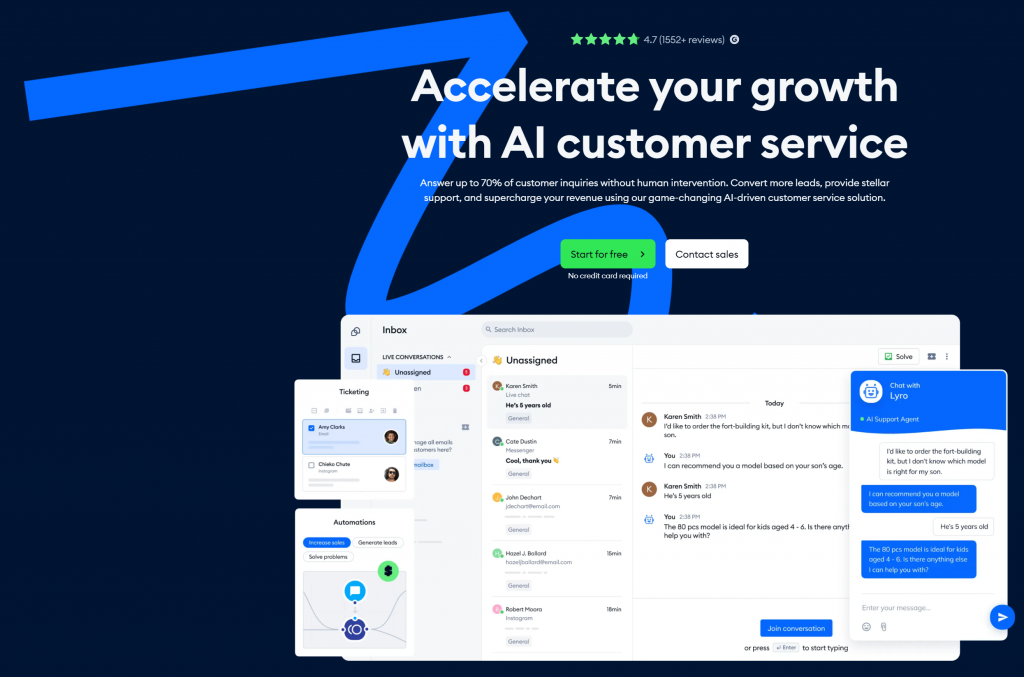
4. Increasing CLTV with Subscription Models
One of the best ways to guarantee repeat purchases is by implementing a subscription model. Companies like Netflix, HelloFresh, and Dollar Shave Club thrive on this principle, ensuring predictable revenue and long-term customer retention.
Even if you don’t run a subscription-based business, you can implement auto-renewals, pre-paid service plans, or replenishment programs to lock in repeat customers.
For example, if you run an e-commerce store selling skincare products, offering a subscribe & save option ensures customers keep buying without having to think about it.
⏳ Are You Leveraging Micro-Moments?
Find out how Micro-Moment Marketing helps businesses increase subscriptions and retention.
Actionable Tip: If you’re in e-commerce, platforms like Recharge or Bold Subscriptions can help you introduce subscription options without completely changing your business model.
5. Gamification: Making Engagement Fun
Gamification is a powerful yet underused tactic to boost engagement, retention, and CLTV. By adding game-like mechanics to your customer interactions, you make shopping, engaging, and purchasing more rewarding.
For instance, Nike’s Run Club App keeps customers engaged by offering challenges, achievement badges, and social sharing features. The more engaged users are, the more likely they are to stay loyal to the brand.
If you run a gym, coaching business, or e-learning platform, gamification can be as simple as offering progress badges, leaderboards, or rewards for milestone achievements.
🎮 Make Engagement Fun with Gamification!
Discover how Hashtag Marketing can boost engagement, increase CLTV, and turn customers into brand advocates.
Actionable Tip: Platforms like BadgeOS or Bunchball allow you to add gamification elements to your website, membership programs, or online courses.
Final Thoughts: CLTV Is About More Than Just Numbers
At the end of the day, calculating customer lifetime value isn’t just about finding a number—it’s about understanding what drives long-term relationships with customers. The brands that invest in customer experience, loyalty, and retention strategies see higher profits, lower churn rates, and sustainable business growth.
If you want to increase your CLTV, focus on delivering continuous value. Whether it’s through personalised marketing, subscription models, gamification, or better customer service, the key is to keep customers engaged and coming back for more.
As the Swedish saying goes:
“Den som har en vän har en skatt”—“One who has a friend has a treasure.”
Your customers are your biggest asset—treat them like valued friends, and they’ll stay loyal for years to come.

8. Data-Driven Decisions: Using “How to Calculate Customer Lifetime Value” to Refine Your Business Strategy
When I first started looking at Customer Lifetime Value (CLTV), I thought it was just another financial metric. But over time, I realised it’s much more than that—it’s a strategic compass that can guide nearly every aspect of a business. The deeper you go into calculating and interpreting CLTV, the more you understand which customers are truly valuable, how much you should invest in acquiring them, and what you can do to keep them around.

Think of CLTV as your business roadmap. Without it, you’re driving blind—spending on marketing, setting pricing strategies, and making retention efforts without truly knowing what’s working. With it, you can allocate resources wisely, refine customer experience strategies, and even predict long-term profitability. As the Swedish saying goes, “Den som inte vågar satsa, kan inte vinna” (He who does not dare to invest, cannot win).” And in business, smart investments are what separate the winners from those who just break even.
Refining Your Pricing Strategy Using CLTV
One of the biggest strategic mistakes I see businesses make is setting prices based purely on costs. While cost-based pricing ensures you cover expenses, value-based pricing, influenced by CLTV insights, helps you maximise profit.
For example, let’s say a subscription-based fitness platform discovers that customers with a CLTV over $2,000 tend to stay loyal for more than two years. Instead of focusing on acquiring new users, they refine their pricing model, introducing loyalty-based discounts and bundled memberships to increase retention.
This same principle applies to premium brands—companies with high CLTV customers can justify premium pricing by offering superior experiences, personalised perks, or even exclusive memberships. If you’re wondering how to integrate data-driven decision-making into your pricing strategy, I wrote about this in more detail in my article The Power of Data-Driven Decision Making for Business Growth.
CLTV Helps Identify High-Value Customers (So You Can Target Them!)
Another key insight from CLTV is customer segmentation. Not all customers bring the same level of value, and knowing who your most profitable customers are helps you prioritise them in your marketing efforts.
One e-commerce brand I worked with initially spent their advertising budget targeting a broad audience. But after conducting CLTV analysis, they found that their most valuable customers were repeat buyers in the 35–50 age range, who preferred premium products. By narrowing their ad targeting, they doubled their ROI, reducing acquisition costs while increasing average order value (AOV).
CLTV can also guide B2B businesses. If a software company realises that enterprise clients have significantly higher lifetime value than smaller businesses, they can shift their sales approach, focusing more on long-term contracts and tailored solutions.
For entrepreneurs looking to enhance their strategic decision-making skills, I recommend my article on How to Develop Personal Entrepreneurial Competencies for Success in Business—because mastering CLTV is one of the core skills of a successful business leader.
Level-up your career with Udacity's popular Data Science Programs – Business Analytics, Data Science For Business Leaders, Data Privacy, and many more.Using CLTV Insights to Reduce Customer Churn
Customer retention is one of the biggest CLTV boosters, yet many businesses focus too much on acquisition and too little on keeping existing customers happy. CLTV calculations can help identify when and why customers leave, allowing you to take preventative action.
For example, if subscription-based businesses see a drop in CLTV after six months, it’s a clear sign that they need a re-engagement strategy. This could involve:
✔️ Exclusive perks for long-term subscribers
✔️ Personalised offers based on browsing history
✔️ Proactive customer support to prevent cancellations
The lesson? CLTV isn’t just about making money—it’s about sustaining relationships. Businesses that take a proactive approach to preventing churn often see a 25–50% increase in customer lifetime value over time.
Making Smarter Marketing Investments
Wouldn’t it be great if you knew exactly how much you could afford to spend on customer acquisition? That’s another powerful advantage of using CLTV in marketing strategy.
Let’s say a company selling high-end watches determines that their average customer brings in $5,000 in lifetime revenue. Knowing this, they can confidently spend up to $500 per acquisition without losing profitability. Without this data, they might hesitate to invest in paid ads, missing out on high-value customers.
This is where AI-powered marketing tools come into play. Platforms like HubSpot, Klaviyo, and Insightful allow businesses to track customer behaviour, refine ad targeting, and personalise campaigns—all essential for maximising CLTV. If you’re wondering how to incorporate these strategies into your business, check out my guide to Left-Brain Marketing, which dives deeper into data-driven marketing.
Final Thoughts: CLTV as Your Strategic North Star
At the end of the day, understanding and leveraging CLTV is about making smarter, more informed business decisions. It’s not just about looking at past customer behaviour—it’s about predicting future revenue and making adjustments accordingly.
Whether you’re an e-commerce brand, a SaaS company, or a service provider, mastering Customer Lifetime Value allows you to:
🚀 Optimise your pricing strategies
🚀 Refine marketing efforts for maximum ROI
🚀 Reduce customer churn and increase retention
🚀 Allocate budgets effectively for long-term success
If you haven’t yet started using CLTV insights in your business, now is the time. Because as the Finnish saying goes, “Parempi myöhään kuin ei milloinkaan”—“Better late than never!”
9: The Future of CLTV: Predicting Trends and Optimizing for Long-Term Profitability
This section will explore upcoming trends in customer lifetime value (CLTV), how businesses can adapt, and how to ensure sustainable growth using data-driven insights. It will cover:
• Emerging trends in CLTV and predictive analytics
• The role of AI and automation in enhancing CLTV accuracy
• How shifting consumer behaviours impact CLTV calculations
• Strategies for long-term customer retention and profitability
• Industry-specific examples of future-focused CLTV strategies
📈 CLTV in the Future: What’s Next?
If there’s one thing I’ve learned about business, it’s that standing still means falling behind. The way we calculate customer lifetime value (CLTV) today isn’t the way we’ll do it five years from now. Advancements in AI, changing consumer behaviours, and the rise of hyper-personalized experiences are already reshaping how businesses maximize CLTV. I’ve seen companies that embraced predictive analytics thrive, while those that ignored these trends struggled to keep up.
A prime example? A luxury fashion brand I worked with used historical CLTV models to determine their best customers. But their data was outdated. They weren’t considering the fact that Gen Z customers shop differently than Millennials. When they adopted AI-powered forecasting tools, they identified a new segment of customers who made frequent but lower-value purchases—giving them the chance to build loyalty through personalized offers. The result? A 20% increase in repeat purchases over six months.
So, what does the future hold for CLTV? Let’s explore the trends that will define the next wave of customer retention and profitability.
📊 AI and Automation: The New CLTV Superpower
Predicting CLTV has always involved historical data, but AI and automation are taking things to a new level. Today, businesses can use machine learning models to anticipate customer behaviour before they even make a purchase. Platforms like Segment, Optimove, and RetentionX analyse customer data in real time, offering insights into who is likely to churn and who is primed for upsells.
Guess less and sell more with predictive segmentation. Sign up and start targeting today.For example, a subscription box service I consulted initially used a basic CLTV formula but struggled with high churn rates. When they integrated an AI-driven CLTV prediction model, they could segment high-risk customers and automatically send them tailored retention offers. The impact? A 30% reduction in cancellations within just three months.
💡 Takeaway: If you’re still relying solely on historical CLTV data, it’s time to embrace predictive analytics. AI tools allow you to forecast which customers are worth the most and proactively keep them engaged.
Want to learn more about how AI is revolutionizing business strategies? Check out my deep dive into AI tools that are changing the game and see how you can apply them to boost customer retention and CLTV.
📉 Changing Consumer Behaviours: What It Means for CLTV
The way customers interact with brands today is vastly different from even a decade ago. We live in an era of on-demand services, short attention spans, and subscription-based models. Businesses that fail to adapt their CLTV models to these changes risk making costly mistakes.
Take Netflix as an example. Their early CLTV calculations assumed that subscribers would stay for years—but then streaming competition exploded. Instead of relying on outdated CLTV assumptions, Netflix shifted to a micro-segmentation approach, identifying patterns in binge-watching behaviour, content preferences, and cancellation triggers. This allowed them to personalize retention strategies, keeping more users engaged for longer.
The lesson here? Your CLTV isn’t set in stone. If you’re not regularly updating your calculations to reflect shifting consumer behaviours, you could be underestimating or overestimating your true profitability.
💰 Retention is the New Acquisition: Prioritizing Customer Loyalty
It’s no secret that acquiring a new customer is five times more expensive than keeping an existing one. But the smartest businesses aren’t just focused on retention—they’re making loyalty a competitive advantage.
💡 Key strategies for maximizing CLTV through retention:
✔️ Personalized loyalty programs – Rewarding high-value customers based on their unique spending habits.
✔️ Subscription-based models – Converting one-time buyers into long-term members.
✔️ Exceptional customer experiences – Brands like Ritz-Carlton and Zappos built loyalty by going above and beyond for customers.
A well-executed loyalty strategy doesn’t just keep customers around—it increases their lifetime value. Take Starbucks, for example. Their Starbucks Rewards program not only drives repeat purchases but also influences what customers buy by offering personalized discounts. Starbucks doesn’t just retain customers—they maximize each customer’s revenue potential.
🔮 Future-Proofing Your CLTV Strategy: Next Steps
So, what should businesses do today to prepare for the future of CLTV? Here are the three key actions I recommend:
1️⃣ Adopt AI-powered CLTV tools – If you’re still relying on manual calculations, it’s time to upgrade. AI-driven analytics tools help predict trends and optimize customer retention.
2️⃣ Test and refine your CLTV model regularly – Your CLTV today won’t be the same next year. Customer behaviours shift, and your strategy should too.
3️⃣ Think beyond retention—focus on experience – Brands that offer seamless, valuable, and personalized experiences will always come out on top.
As the Swedish say, “Den som väntar på något gott väntar aldrig för länge”—meaning good things come to those who wait. But when it comes to CLTV? The businesses that take action today will be the ones leading tomorrow. 🚀
🔥 Final Thought:
CLTV isn’t just about numbers—it’s about understanding your customers deeply and anticipating their needs before they do. The future belongs to businesses that use data-driven insights to create long-term, profitable relationships with their customers. Are you ready to take your CLTV strategy to the next level?
10. Summary & Conclusion: Transform Insights into Action – Your Path to Business Mastery
You’ve now unlocked one of the most powerful tools in business: customer lifetime value (CLTV). But remember, knowledge alone won’t grow your revenue—it’s action that makes all the difference.
Every successful business leader I’ve worked with has one thing in common: they don’t just collect data—they use it. They track, test, and tweak their strategies based on real numbers. Whether you’re running an e-commerce store, a SaaS platform, or a local café, your profitability isn’t about one-off sales—it’s about customer relationships.
By implementing the principles we’ve explored—accurate CLTV calculations, strategic pricing, AI-driven insights, and customer experience improvements—you’re not just improving your numbers, you’re securing your business’s future. When you understand your customers deeply, you gain an unfair advantage over competitors still guessing their way through marketing.
But your journey doesn’t stop here. The most successful entrepreneurs are those who never stop learning. The business landscape is evolving, and staying ahead requires constant adaptation, new strategies, and smarter decision-making. That’s why I encourage you to keep sharpening your business acumen—because the more you know, the better you grow.
📌 Want to continue mastering business growth? Read my comprehensive guide on business acumen skills to ensure you’re making the smartest strategic moves for long-term success.
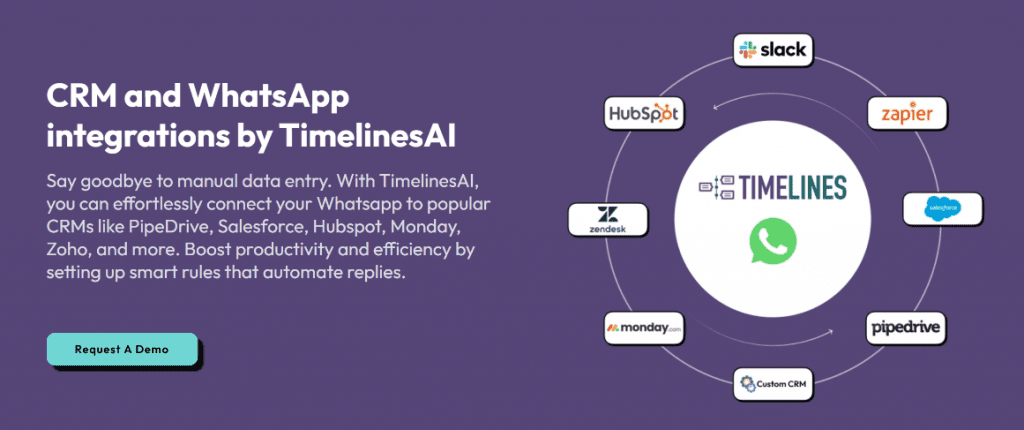
💡 Final Thought: Success in business isn’t about luck—it’s about understanding the numbers that drive your growth. Apply what you’ve learned today, and watch your business thrive!
🚀 Ready to take your business to the next level? Subscribe to my blog and never miss a game-changing insight!
- How Live Shopping Can Skyrocket Your Small Business Sales: The Ultimate Guide to Getting Started
- Turn AI Anxiety into Competitive Advantage: How to Future-Proof Your Workforce for the AI Revolution
- Unlock Profit: Calculate Customer Lifetime Value & Maximize Growth
- Creating a Customer Persona: A Step-by-Step Guide On How To Do It
- Unleashing the Power of Digital Signage: The Best Software to Transform Your Business

